Penguins Of Antarctica
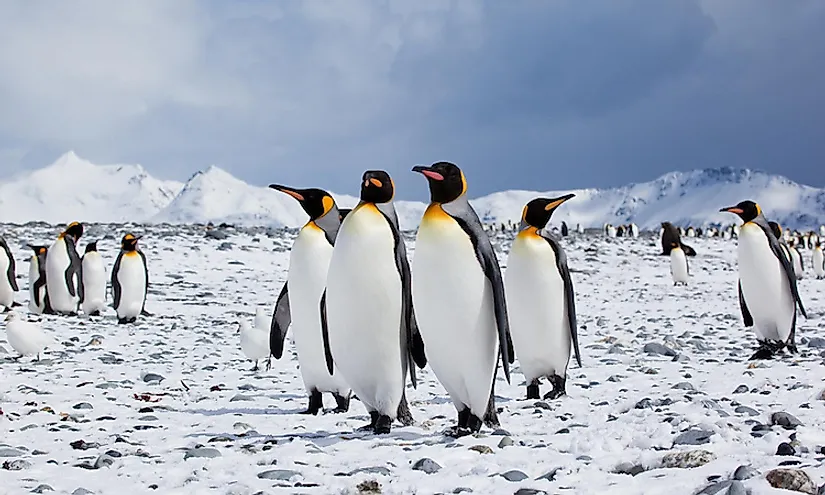
Seven species of penguins inhabit the land and water in and around the frozen continent of Antarctica. These flightless birds, famous for their tuxedo-like appearance and waddling gait, are a major attraction for tourists who dare to explore the extreme continent. However, with global warming and climate change, the habitat of these gentle, social birds is at threat. Here, we attempt to explore the lives of these penguin species of Antarctica and their distinguishing features.
7. Rockhopper penguin -
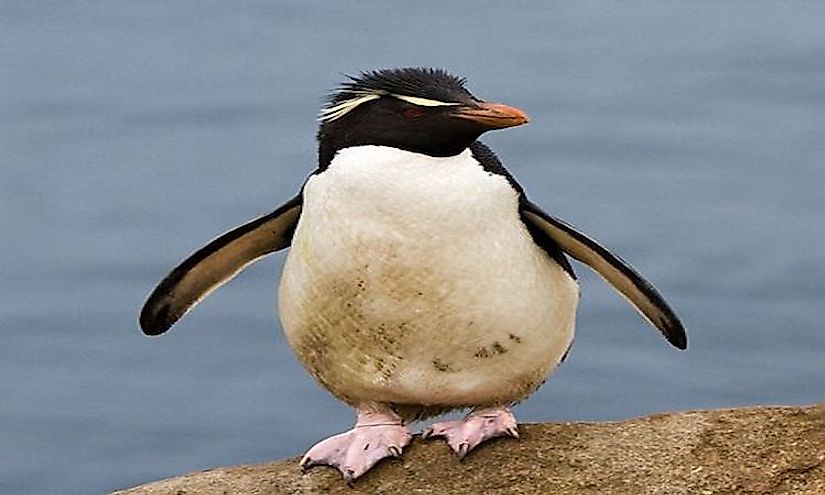
Rockhopper penguins are small sized penguins distinguished from other penguin species by their red eyes, pink webbed feet, orange beak, and the black and yellow spiky head feathers. Three subspecies of these penguins are found across a wide range from Antarctica to the South Atlantic and Indian Oceans. Krills and crustaceans form the diet of the carnivorous birds. Squids and myctophid fish are also occasionally hunted by the rockhopper penguins. These animals can dive 330 feet below the surface of the sea in search of prey and can stay in the sea for several days during the hunting period.
6. Macaroni penguin -
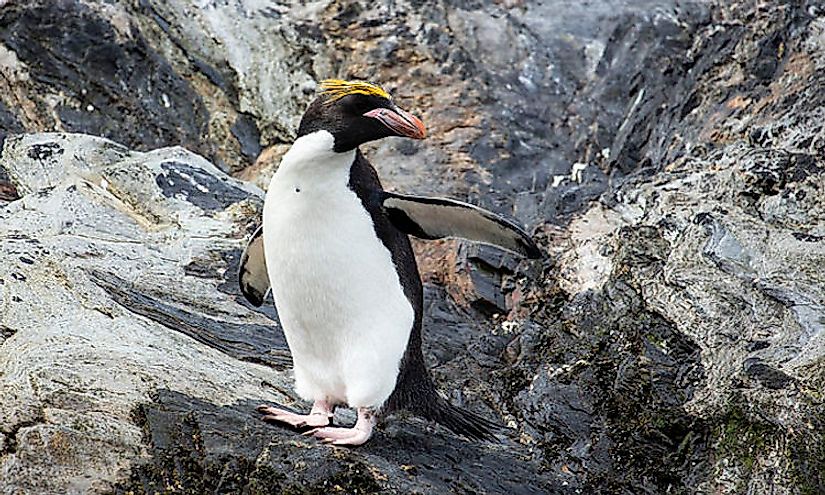
The macaroni penguin has a widespread distribution, being found from the Antarctic Peninsula to the subantarctic regions. These penguins are easily distinguished by their yellow colored crest. Their head and upper body feathers are distinctly dark, a sharp contrast against the white underparts. Crustaceans, cephalopods, and fish are the primary sources of food for these marine birds. These Antarctic penguins have experienced a sharp fall in numbers since the past few decades. This decline in population has triggered the IUCN to classify the penguins as vulnerable. Irresponsible fishing activities and climate change have drastically reduced the food source of the macaroni penguins which, in turn, has adversely impacted the populations of these creatures.
5. King penguin -
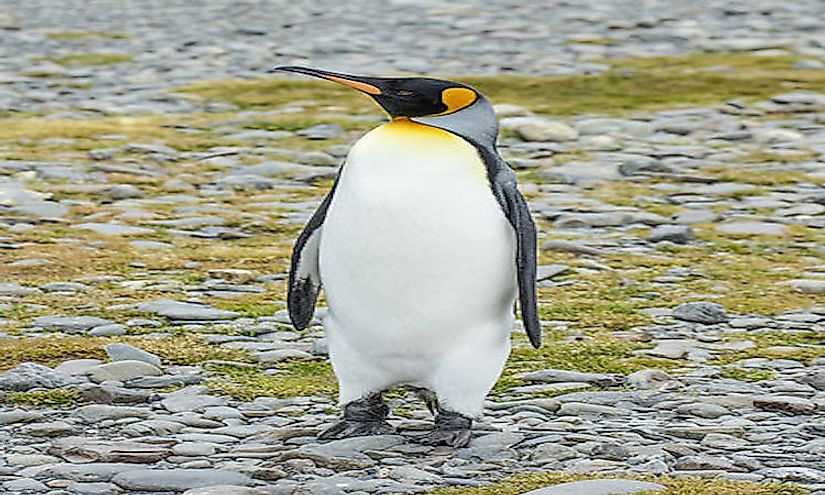
The king penguin is a large penguin species that breeds in the subantarctic islands in the Southern Ocean. These penguins closely resemble the emperor penguins. They are 70 to 100 cm tall with males being slightly larger than females. They adorn a broad cheek patch that is orange in color, unlike the emperor penguins who have a white cheek patch. Like the emperor penguins, the king penguins have a yellow-orange plumage at the top of the chest. These penguins primarily feed on small fish and squid and can dive more than 980 feet underwater while foraging. Orcas and seals often predate on the adult king penguins while seabirds feed on young chicks and eggs of these Antarctic penguins
4. Gentoo penguin -
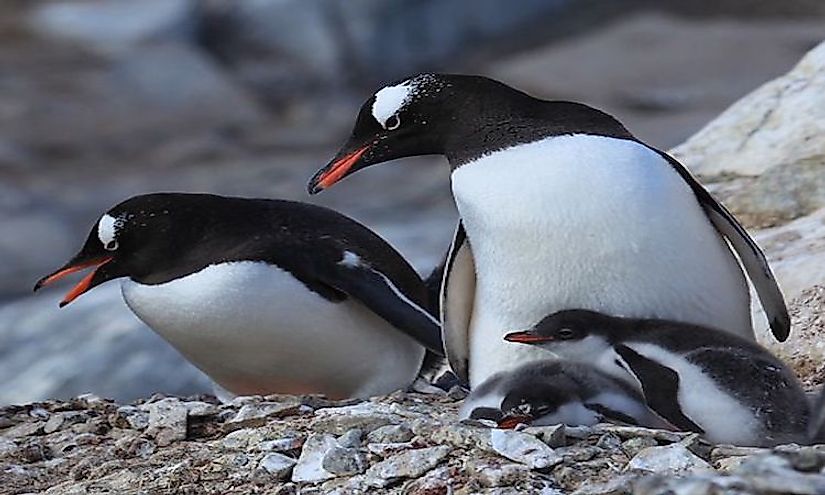
Another species of Antarctic penguins, the gentoos are the third largest penguin species and the fastest underwater swimmer among all penguins. A wide, bonnet-shaped, white stripe across the top of the head of gentoo penguins helps to easily distinguish them species from other penguin species. They also have a longer and more prominent tail than any other penguin species. Gentoos feed on krill and fish and in turn, are the prey of leopard seals, killer whales, and sea lions. Unfortunately, the gentoo penguins are classified as near threatened by IUCN due to a rapid decline in some populations of these penguins.
3. Emperor penguin -
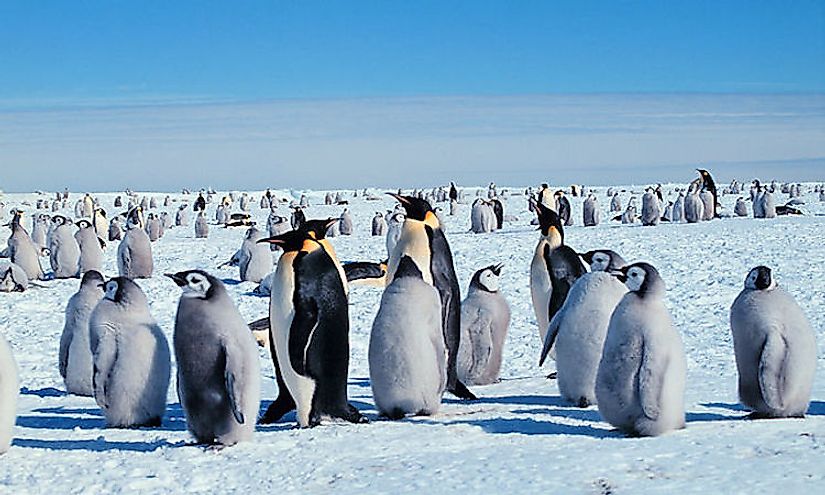
The tallest and heaviest among the penguins, the emperor penguins are endemic Antarctic penguins. These penguins weigh between 25 and 44 kg and are about 122 cm tall. They can be identified by virtue of their large size, black dorsal surface and head, pale-yellow breast, white belly, and ear patches that are bright yellow in color. Crustaceans, cephalopods, and fish form the diet of the emperor penguins. They can dive to depths of 1,755 feet and stay underwater for 18 minutes. Solid bones, uniquely structured hemoglobin, and the ability to reduce metabolism allows these penguins to dive to such great depths. These Antarctic penguins are the only ones that breed during the winter in the frozen continent.
2. Adelie penguin -
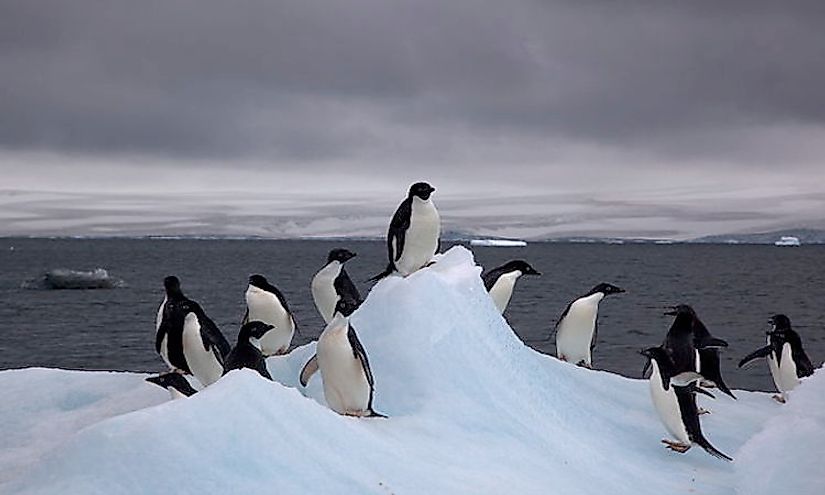
Adelie penguins are mid-sized penguins with a height ranging between 46 to 71 cm. The white ring surrounding the eyes of these Antarctic penguins helps to distinguish them from other species. Krills, squid, and silverfish are their main food. Skuas, leopard seals, and killer whales are the predators of young and adult Adelie penguins. The Adelie penguins are classified as Near Threatened by IUCN although a penguin census conducted in 2014 showed that the numbers of these penguins has increased significantly as compared to the previous census. Climate change is probably the biggest threat faced by these penguins.
1. Chinstrap penguin -
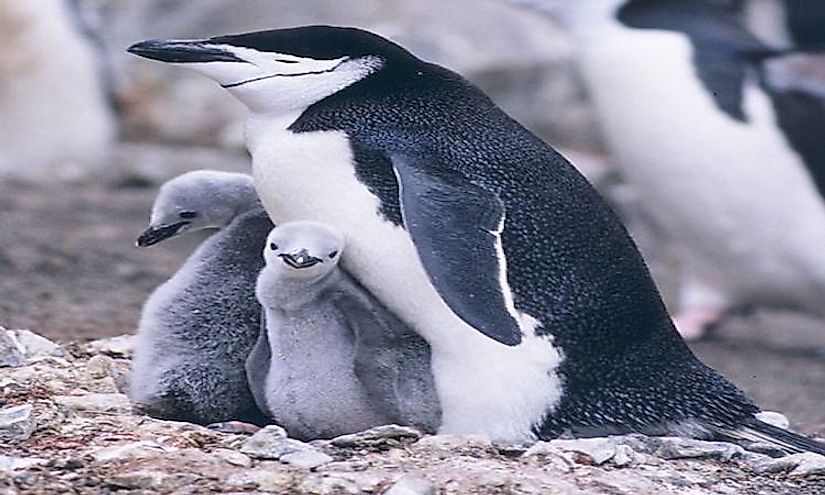
The chinstrap penguin can be easily identified due to the presence of a thin, black band under its head that gives it the appearance of wearing a helmet strapped under the chin. These Antarctic penguins have a circumpolar distribution and a global population of about 8 million. The chinstrap penguins usually swim 80 km offshore daily to forage for krill, shrimps, squids, and fish. Leopards seals are the major predators of these penguins.











